Solution
Using the digital zoomUsing the safety zoom
Using the digital tele-converter
Reacquiring Zoomed In Subjects (Zoom Framing Assist)
If you cannot shoot the subject up close with the optical zoom, please consider the following.
Using the digital zoom
You can use the [Digital zoom] to zoom up to a maximum of approximately 140x and capture subjects that are too far away for the optical zoom to enlarge.
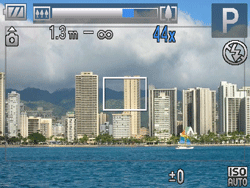
Press the ⋖MENU⋗ button (

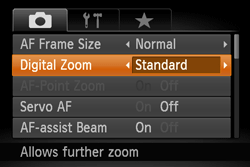
Caution
- [High-speed Burst HQ] (












Caution
Using the safety zoom
Depending on how you have set the number of recording pixels and the magnification of the digital zoom, the [Zoom bar] may be displayed in yellow (safety zoom).
To shoot with the [Digital zoom] without causing the image quality to degrade, please shoot within the range of the safety zoom.
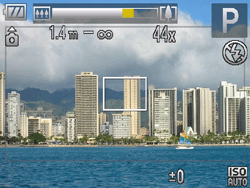
Using the digital tele-converter
With the [Digital Tele-Converter] setting, the focal length of the lens can be increased by a factor equivalent to 1.5x or 2.0x. This makes it possible to increase the magnification without compromising the brightness of the lens even more than increasing the magnification to the same rate in ordinary zoom operations (including digital zoom), enabling you to shoot with a faster shutter speed, thereby minimizing camera shake and subject blurring.
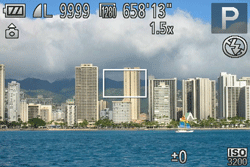
Press the ⋖MENU⋗ button (

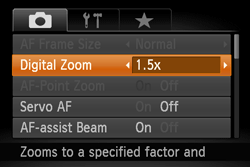
Caution
 ) or [Medium 1] (
) or [Medium 1] ( ) will cause images to appear coarse (the zoom factor will appear in blue).
) will cause images to appear coarse (the zoom factor will appear in blue).- Aspect ratios of [16:9] or [4:3] in a recording pixel setting of [Large] (
- An aspect ratio of [4:3] in all other recording pixel settings.
 ), the shutter speed may be the same as when zoomed in on the subject using digital zoom.
), the shutter speed may be the same as when zoomed in on the subject using digital zoom. - ⋖AUTO⋗ (




Caution
Reacquiring Zoomed In Subjects (Zoom Framing Assist)
If you lose track of your subject while zoomed in, temporarily zooming out will make it easier to find.

To use the [Frame Assist] function, press and hold the ⋖Zoom Framing Assist⋗ button (
If you release the button, the zoom will revert to its previous magnification.
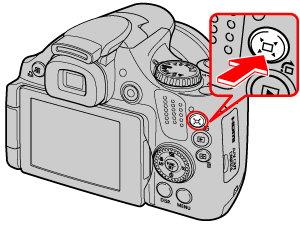
 ).
).Press the ⋖MENU⋗ button (


Caution
- [Stitch Assist] (




